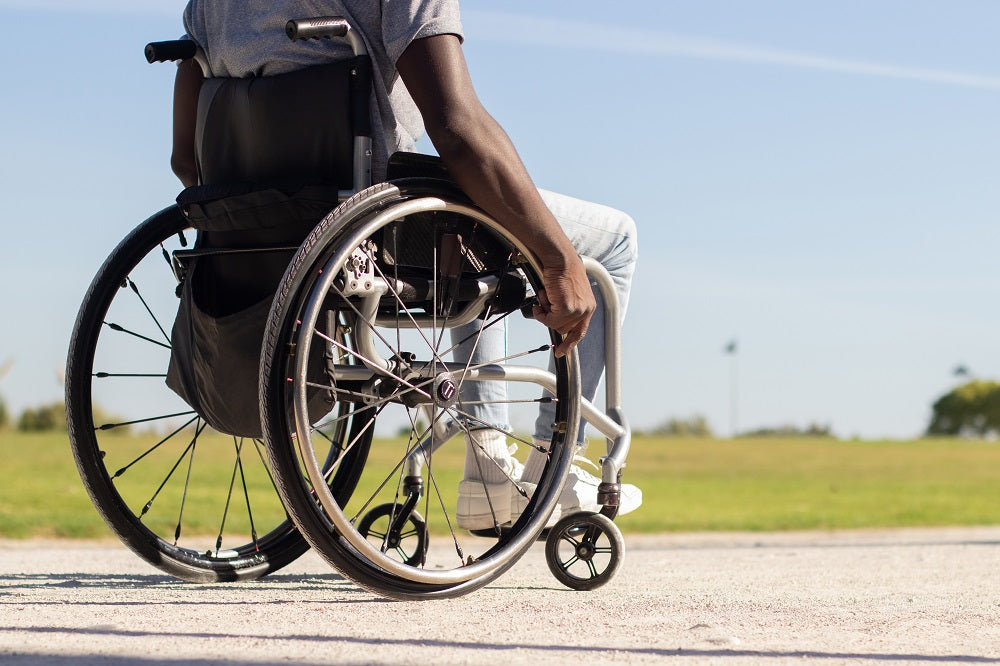
The Evolution and Impact of Wheelchairs

Wheelchairs are more than just mobility devices. For millions of people, they represent freedom, independence, and the ability to stay connected with everyday life. Whether temporary or long-term, mobility challenges can affect people of all ages—and the right wheelchair can make all the difference.
This article takes a closer look at the history of wheelchairs, the most common types available today, and important things to consider when choosing the right model.
A brief look back in time
Wheeled furniture has existed since ancient times, but the first recorded wheelchair designed for mobility assistance was created in 1595 for King Philip II of Spain. It featured arm and leg rests, but required someone else to push it.
In the 18th century, the Bath Chair became popular across Europe. It offered better maneuverability and was often used by the elderly and disabled. But the most important milestone came in 1932, when engineer Harry Jennings built the first lightweight, folding wheelchair for his friend Herbert Everest. That design changed the future of mobility forever.
Types of wheelchairs
Today’s wheelchairs are designed to meet a wide variety of needs. Here are the most common types:
Manual wheelchairs
Manual wheelchairs are propelled by the user or pushed by a caregiver. They’re lightweight, portable, and don’t require a battery. Some are designed for everyday use, while others are built for travel or sports.
Standard models are durable and practical, while ultra-lightweight versions are easier to lift and store. Many users prefer manual chairs for their simplicity and ease of maintenance.
Electric wheelchairs
Electric wheelchairs, or power chairs, are battery-powered and controlled by a joystick. They offer independence for users who may not have the strength or stamina to operate a manual chair.
There are several drive types, including front-wheel, mid-wheel, and rear-wheel configurations. Each offers different benefits depending on the terrain and turning radius required.
Some models now combine heavy-duty support with compact design. For example, a folding electric wheelchair 400 lb capacity provides both strength and portability—ideal for users who need a higher weight limit but still want a model that’s easy to store and transport.
For those considering mobility scooters as an alternative, brands like Metro Mobility Scooters also offer reliable, user-friendly solutions for individuals who prefer a seated scooter-style ride over a traditional power chair.
Transport chairs
Transport chairs are lightweight and designed to be pushed by someone else. They’re commonly used for short outings, travel, or post-surgery recovery. Because they have smaller wheels, they’re not intended for self-propulsion.
Sports wheelchairs
Built for speed and agility, sports wheelchairs are used for racing, basketball, tennis, and more. They’re often custom-made and feature angled wheels for stability. These chairs are lightweight, durable, and built to handle fast movements and quick turns.
Standing wheelchairs
These specialized wheelchairs allow users to raise themselves into a standing position. Standing can improve circulation, reduce pressure sores, and help with digestion and bone health. Available in both manual and power versions, these chairs offer a unique combination of mobility and therapy.
Pediatric wheelchairs
Children require wheelchairs that grow with them. Pediatric models come in a variety of sizes and can often be adjusted over time. They are available in both manual and electric formats and are designed with comfort, safety, and development in mind.
Tilt and recline wheelchairs
These models are designed for people who spend long hours in their chair or need extra support. Tilt-in-space chairs allow for changes in position without adjusting body alignment. Reclining chairs lower the backrest and are ideal for users who need pressure relief or help with circulation.
Important factors to consider
Choosing a wheelchair is a personal decision. The right one depends on several factors:
- Where it will be used (indoors, outdoors, both)
- How often it needs to be folded or transported
- Upper body strength and mobility level
- Weight capacity and seat width
- Support and comfort features
- Battery life (for electric models)
Some users may prefer a basic chair for occasional use, while others need a daily-use model with advanced support. If travel or limited storage is a concern, folding designs offer greater flexibility.
Accessories and customization
Modern wheelchairs can be customized with a range of accessories, including:
- Cushions and support pads
- Headrests and side supports
- Storage pouches or trays
- Oxygen tank holders
- Anti-tippers and safety belts
Small adjustments like seat height, armrest type, or leg support can make a big difference in comfort. Many chairs also allow for color or frame customizations, especially for younger users or those with active lifestyles.
Real stories, real impact
Wheelchairs continue to change lives every day. Consider Alex, who lost mobility after a spinal injury. With a powered wheelchair, he was able to return to college and now works as a software developer. The chair gave him back his independence and confidence.
Or Maria, a mother of two with multiple sclerosis. She found it hard to keep up with her kids until she switched to a compact power chair. It allowed her to stay active and involved in their daily lives—something she feared she might lose.
Stories like these are a reminder that the right wheelchair is more than just equipment. It’s a lifeline to normalcy, opportunity, and joy.
Looking ahead
Technology continues to push the limits of what's possible. Some of today’s newest wheelchairs include smart sensors, voice controls, and app connectivity. Lightweight carbon fiber frames and longer-lasting batteries are making chairs more capable than ever.
As accessibility awareness grows, the options for mobility devices will continue to expand—bringing even more freedom to those who need it most.
Conclusion
From ancient wooden carts to today’s highly engineered models, the wheelchair has come a long way. Whether you're looking for a simple manual chair or a high-tech electric model, the right choice depends on your needs, goals, and lifestyle.
Take the time to explore your options, consult with a professional if needed, and remember: the best wheelchair is the one that helps you live life to the fullest—comfortably, safely, and on your own terms.
